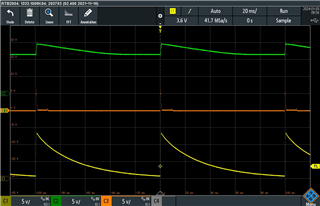Other Parts Discussed in Thread: UCC28070
Hi,
We are using UCC28C42 to generate an isolated 12V as well as a non-isolated auxiliary 12V. The input voltage is 400VDC (coming from a PFC stage), see the schematics below, the transformer is Wurth 750343306 with primary inductance of 360uH and turn ratio of 9.5:1. The design works as long as the AUX12V is connected only to the UCC28C42. As soon as a load of say 80mA (which is needed for other purposes) is connected to the AUX12V the device goes into hiccup. If we load the isolated 12V with say 40mA it will start working again but is seems awkward to burn half a watt just to keep things stable. I would appreciate any suggestion to improve this design.



